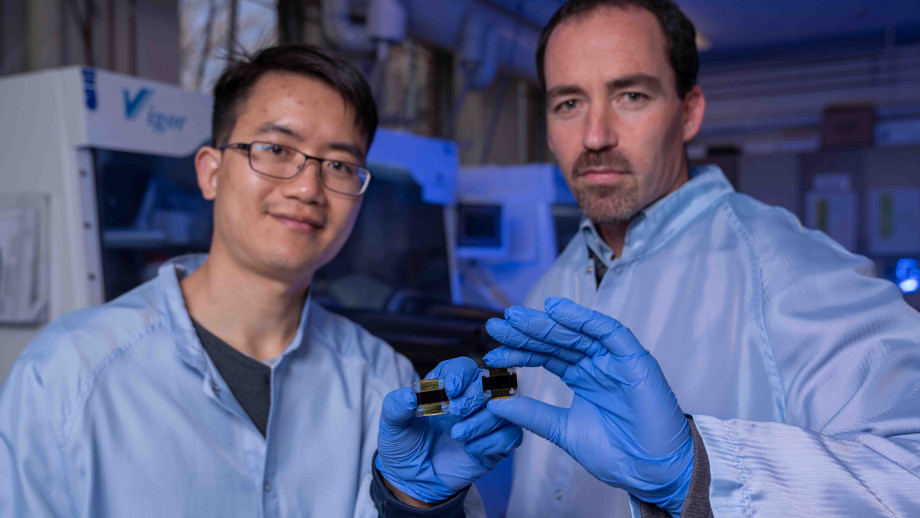The Australian Renewable Energy Agency’s (ARENA) has provided the ANU with $3.6 million in funding as part of the Australian Centre for Advanced Photovoltaics Infrastructure project while the university has chipped in $900,000.
The university this week announced the money will finance “state-of-the-art” equipment for three projects with $3.1 million allocated for a new nano-engineering laboratory while $400,000 has been dedicated to a project exploring perovskite solar technology.
The funding for the perovskite project comes just weeks after UK-based Oxford PV announced a cell featuring the synthetic material was used to set a world record for the amount of the sun’s energy that can be converted into electricity by a single solar cell.
Oxford PV said the cell converted 29.52% of solar energy into electricity. In contrast, standard silicon cells have an average conversion rate of just 15-20% and a practical maximum conversion rate of around 26%. Existing research indicates perovskite has impressive capabilities as a conductor with Oxford PV claiming 35kg of perovskite generates the same amount of power as seven tons of silicon.
Associate Professor Tom White is leading ANU’s perovskite project and he said the latest funding would help provide an advanced processing tool which will allow them to coat traditional silicon solar cells with a film of perovskite, similar to the technology used by Oxford PV, to better utilise photons across the solar spectrum.
“The new tool will allow us to deposit very thin perovskite solar cells directly on top of silicon solar cells,” White said.
“By combining two different technologies in this way we can increase the energy output of the solar cell.”
The latest round of funding will also finance a new ‘nano-engineering’ laboratory which will help researchers create new materials to enhance the conversion of solar energy to electricity in PV devices.
Dr Kean Chern Fong, a senior research fellow at the ANU’s College of Engineering and Computer Science, said the new $3.1 million lab will help Australian researchers “set the pace” when it comes to simultaneously reducing cost and improving efficiency in solar cells, as well as the development of novel photovoltaic concepts.
“This laboratory will be one-of-a-kind internationally,” he said.
“It will empower world-class scientists and aspiring PhD candidates in Australia towards development of revolutionary technologies for many years to come.”
A third project, being led by Dr Hieu Nguyen, was awarded $1 million for equipment which will allow researchers to more precisely measure light absorbed and emitted from solar materials.
“This technology will mean we can move a step closer to unlock the full potential of photovoltaics as a clean, affordable, and sustainable energy source for Australia and the world,” Nguyen said.
“Because every part of light has features corresponding to certain material and device properties, we can diagnose their characteristics by just ‘looking at’ them, rather than touching them – thus avoiding possible damage.”
The university said the three projects will “contribute to unlocking the full potential of photovoltaics as a clean, affordable, and sustainable energy source for Australia and the world”.
This content is protected by copyright and may not be reused. If you want to cooperate with us and would like to reuse some of our content, please contact: editors@pv-magazine.com.









By submitting this form you agree to pv magazine using your data for the purposes of publishing your comment.
Your personal data will only be disclosed or otherwise transmitted to third parties for the purposes of spam filtering or if this is necessary for technical maintenance of the website. Any other transfer to third parties will not take place unless this is justified on the basis of applicable data protection regulations or if pv magazine is legally obliged to do so.
You may revoke this consent at any time with effect for the future, in which case your personal data will be deleted immediately. Otherwise, your data will be deleted if pv magazine has processed your request or the purpose of data storage is fulfilled.
Further information on data privacy can be found in our Data Protection Policy.